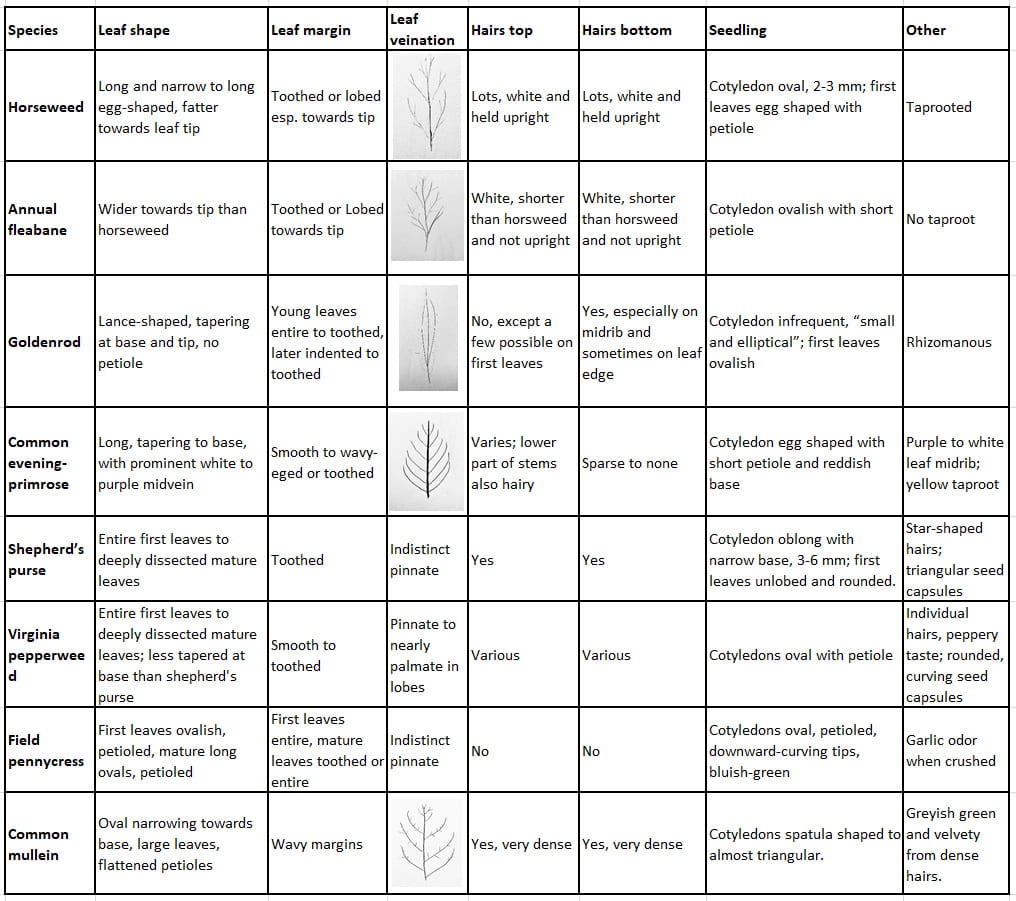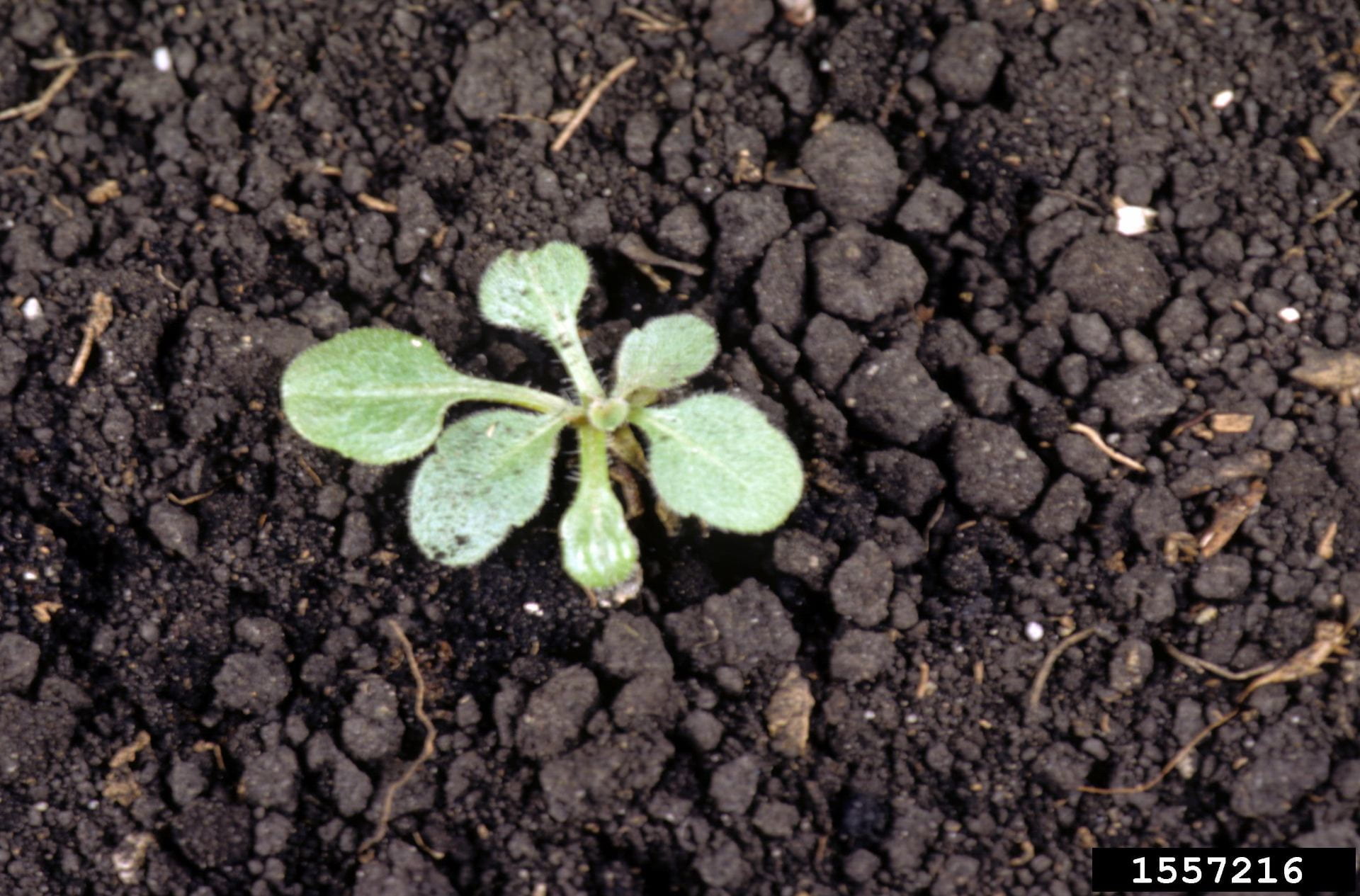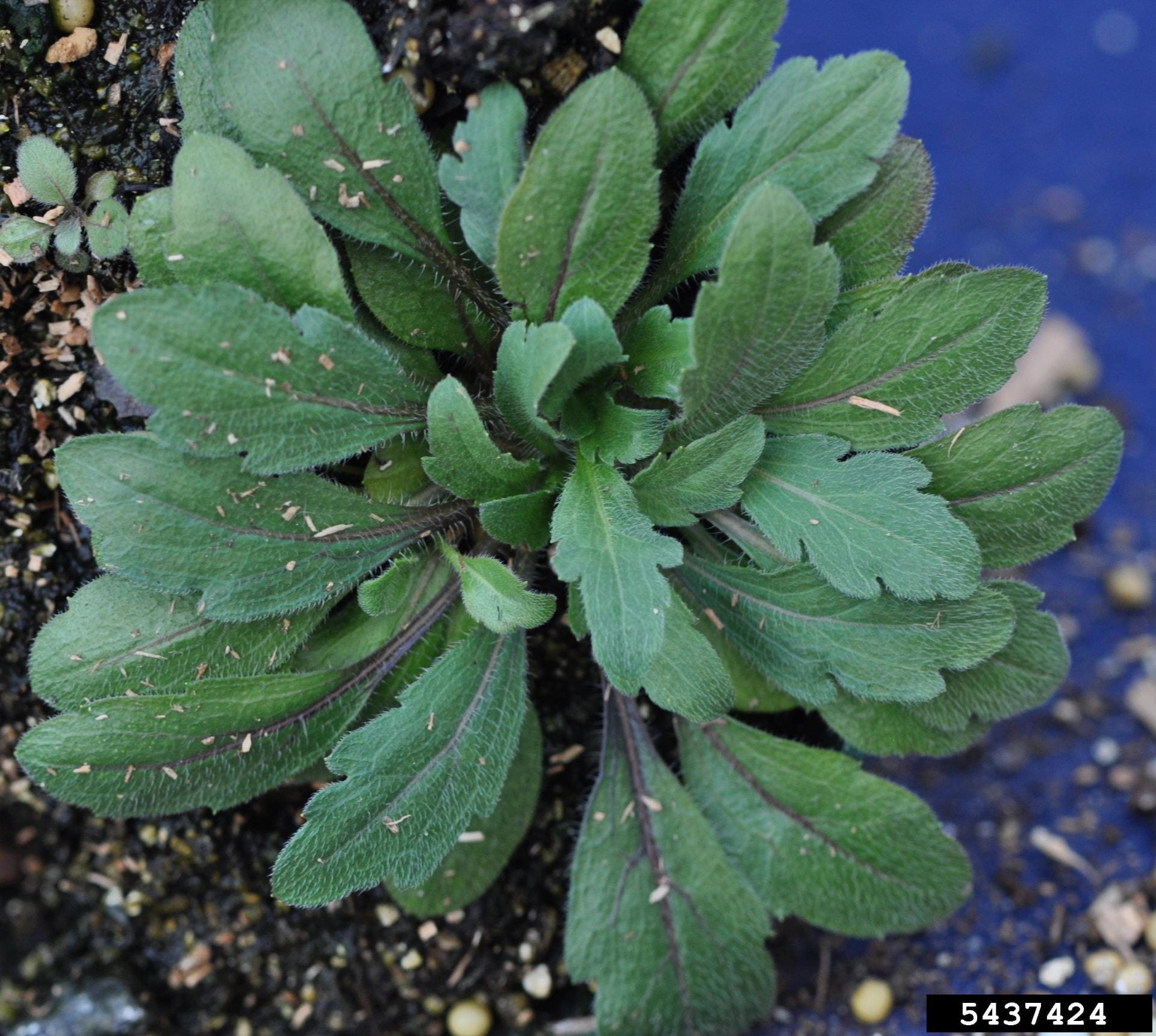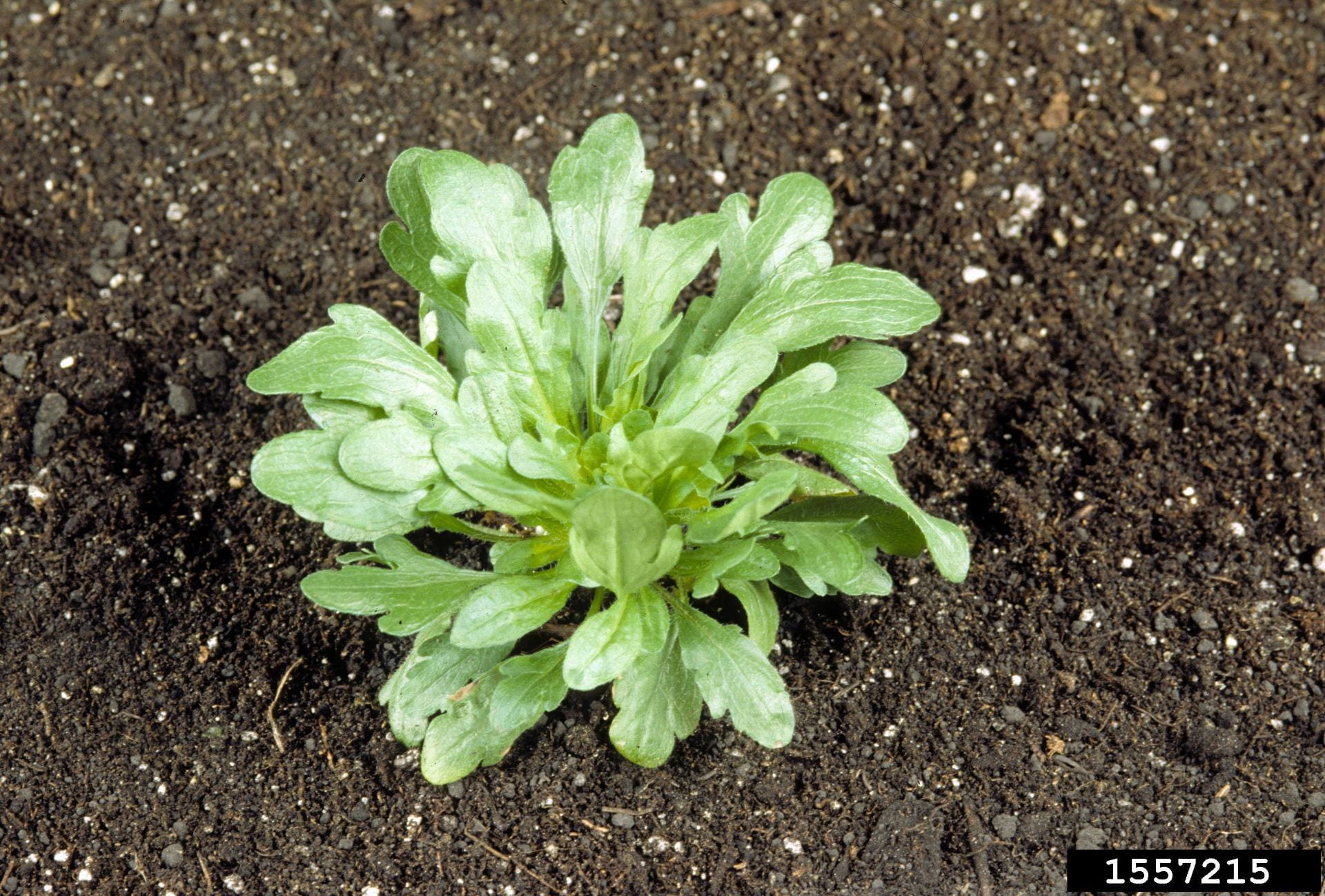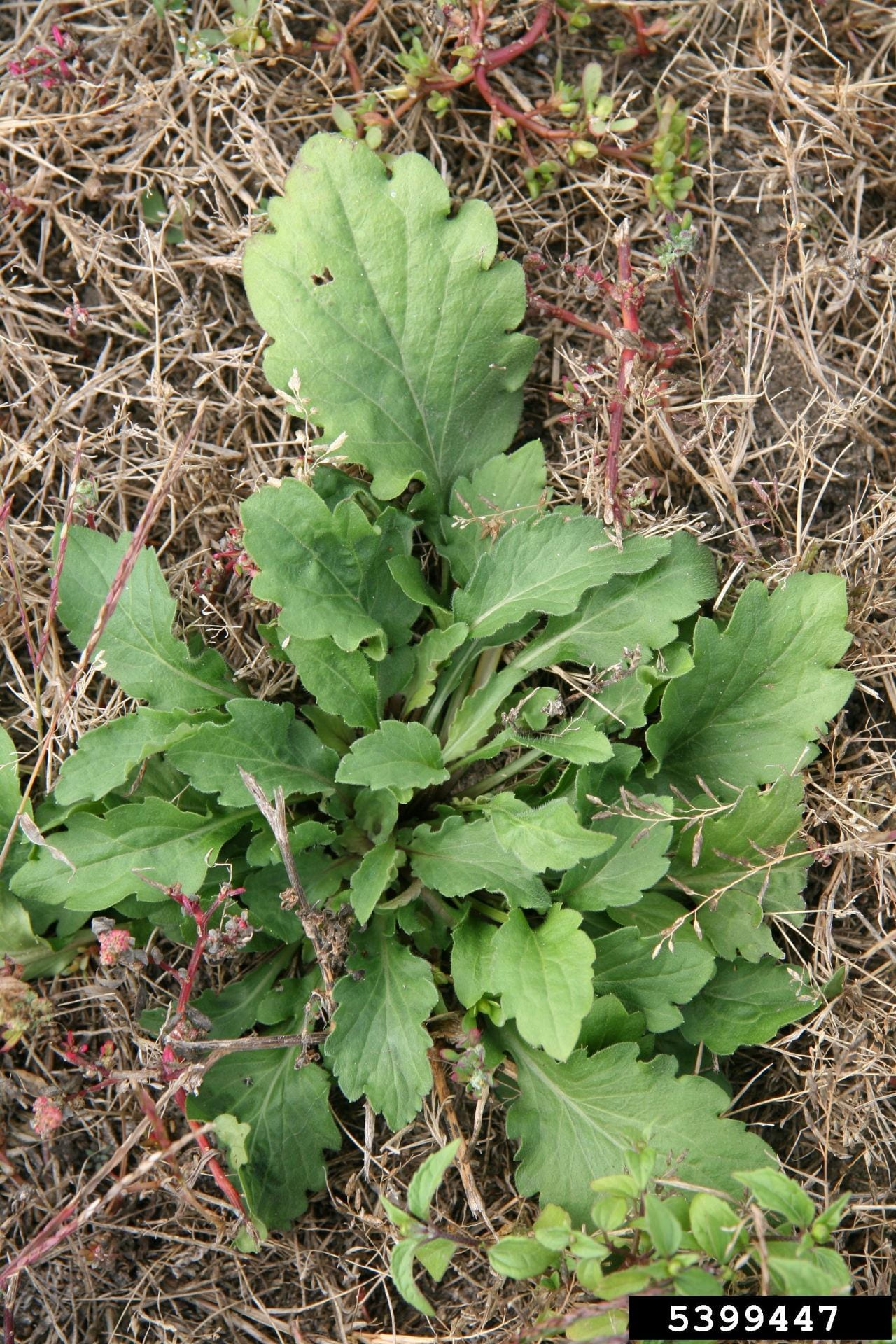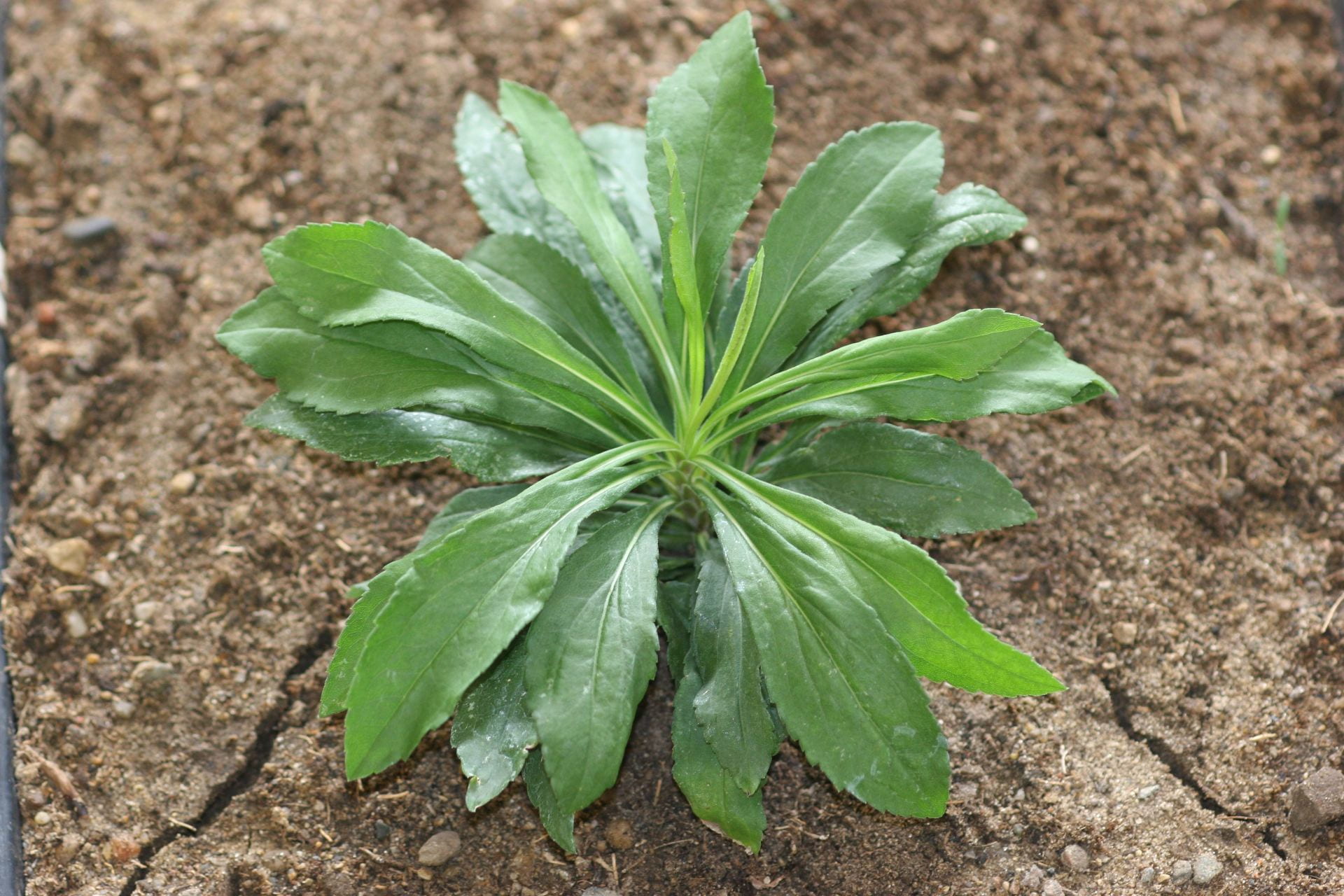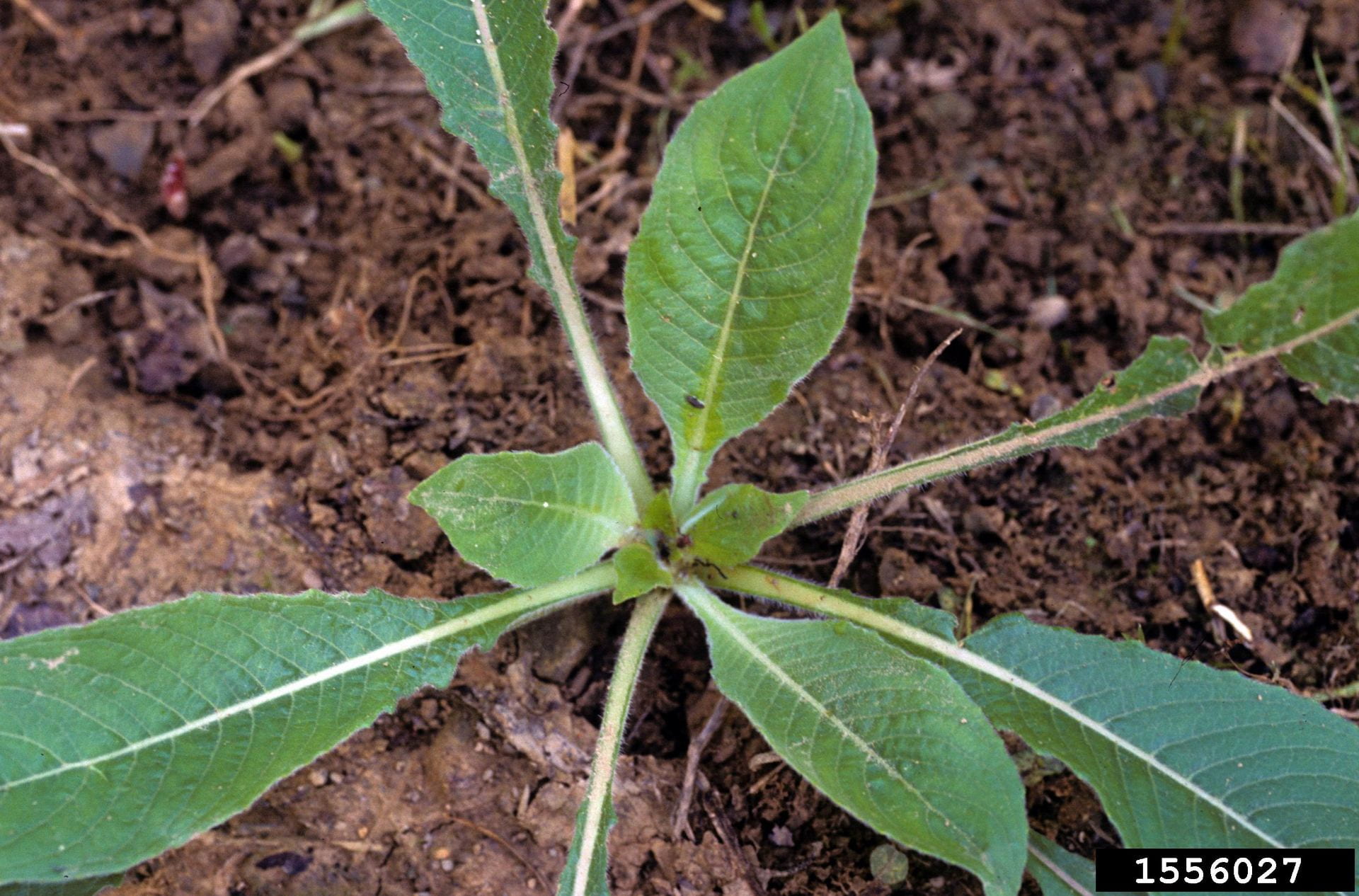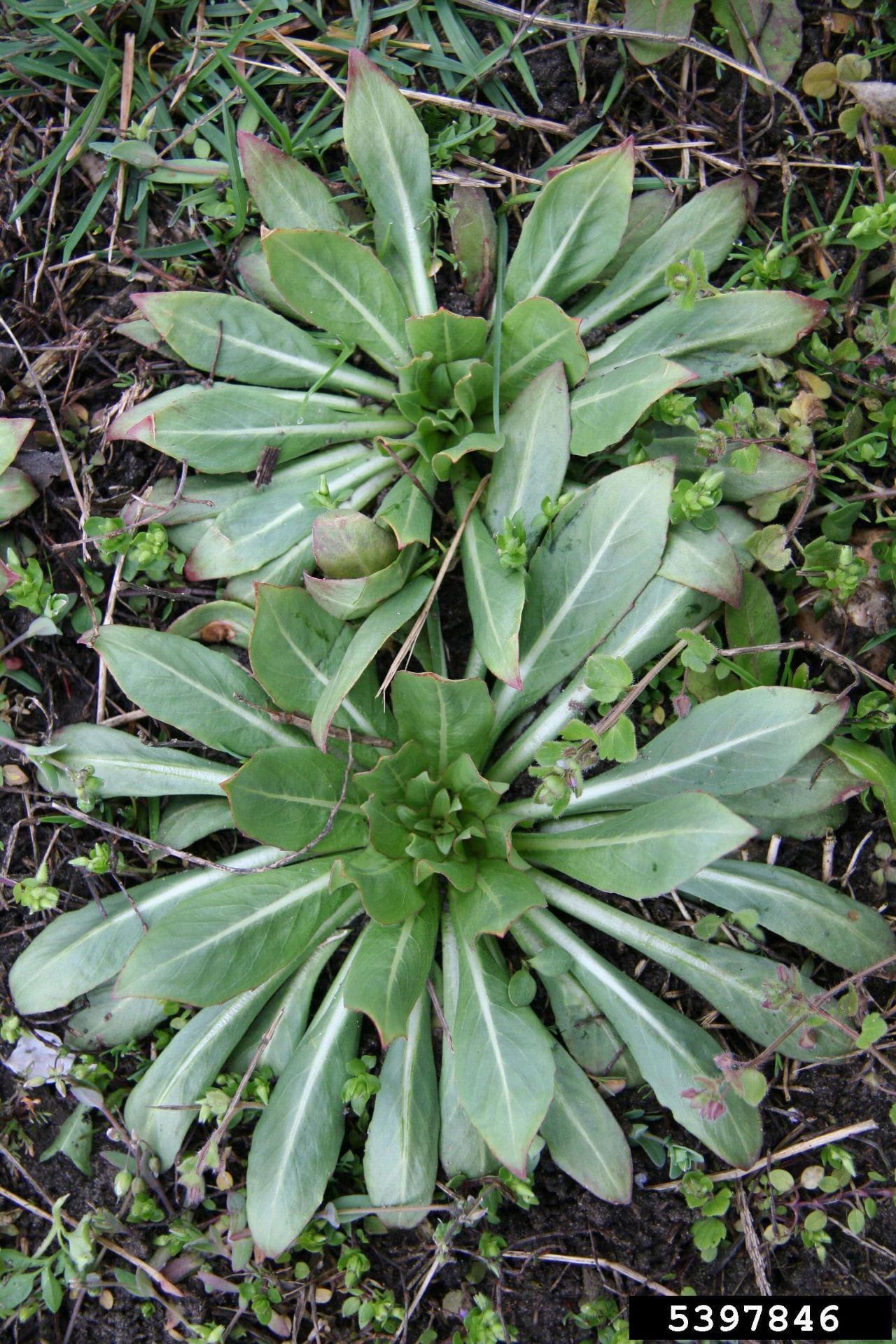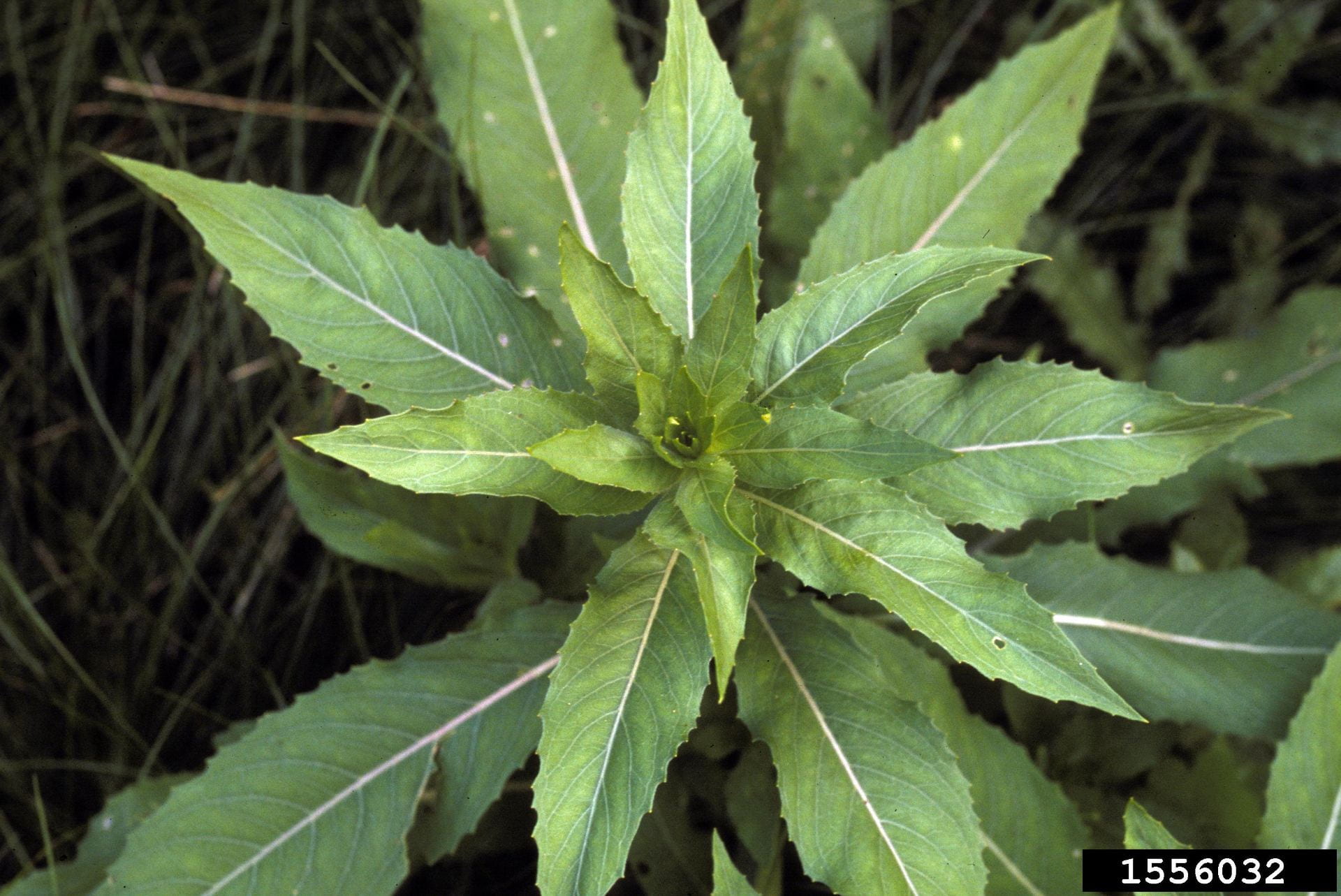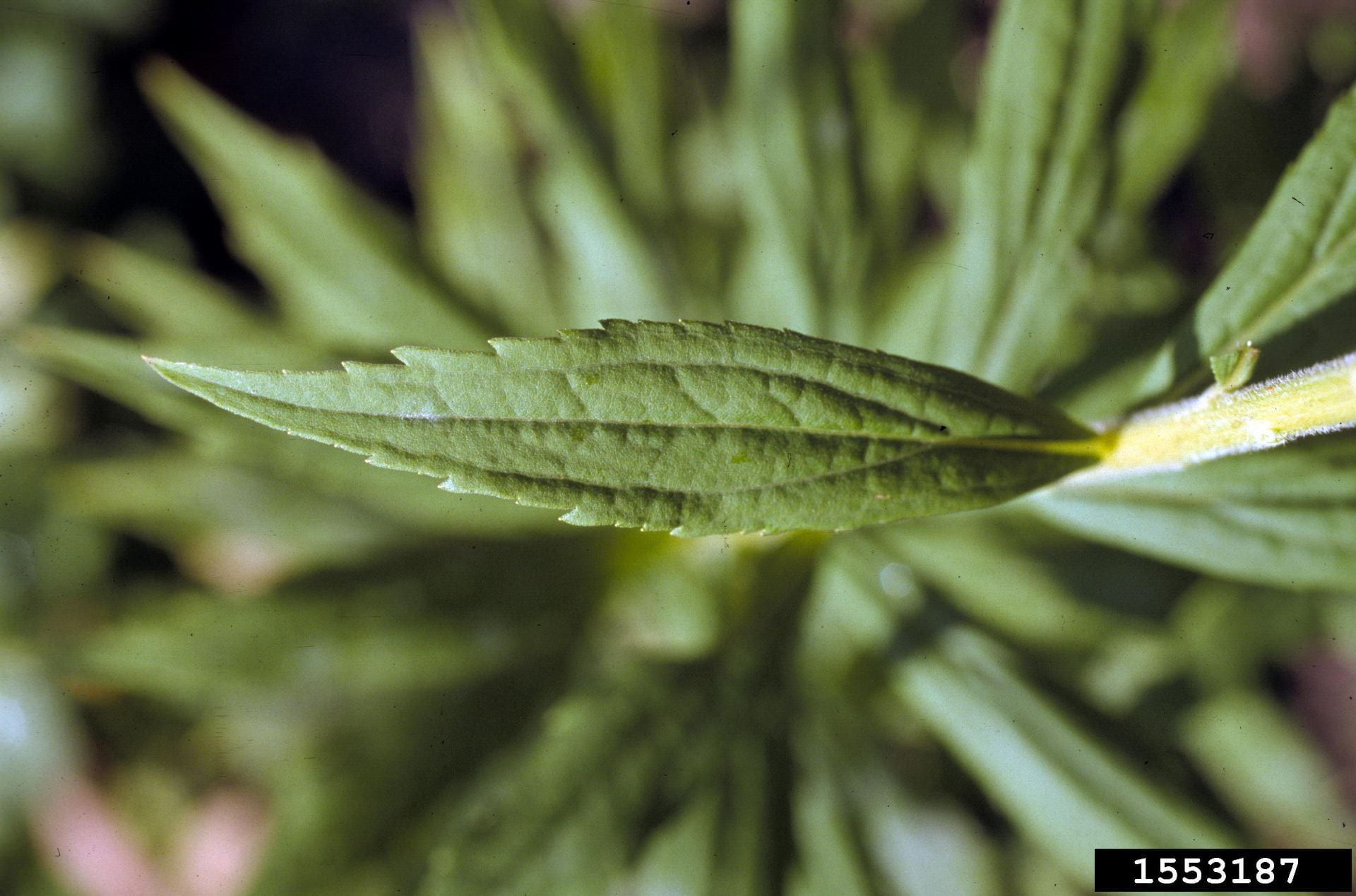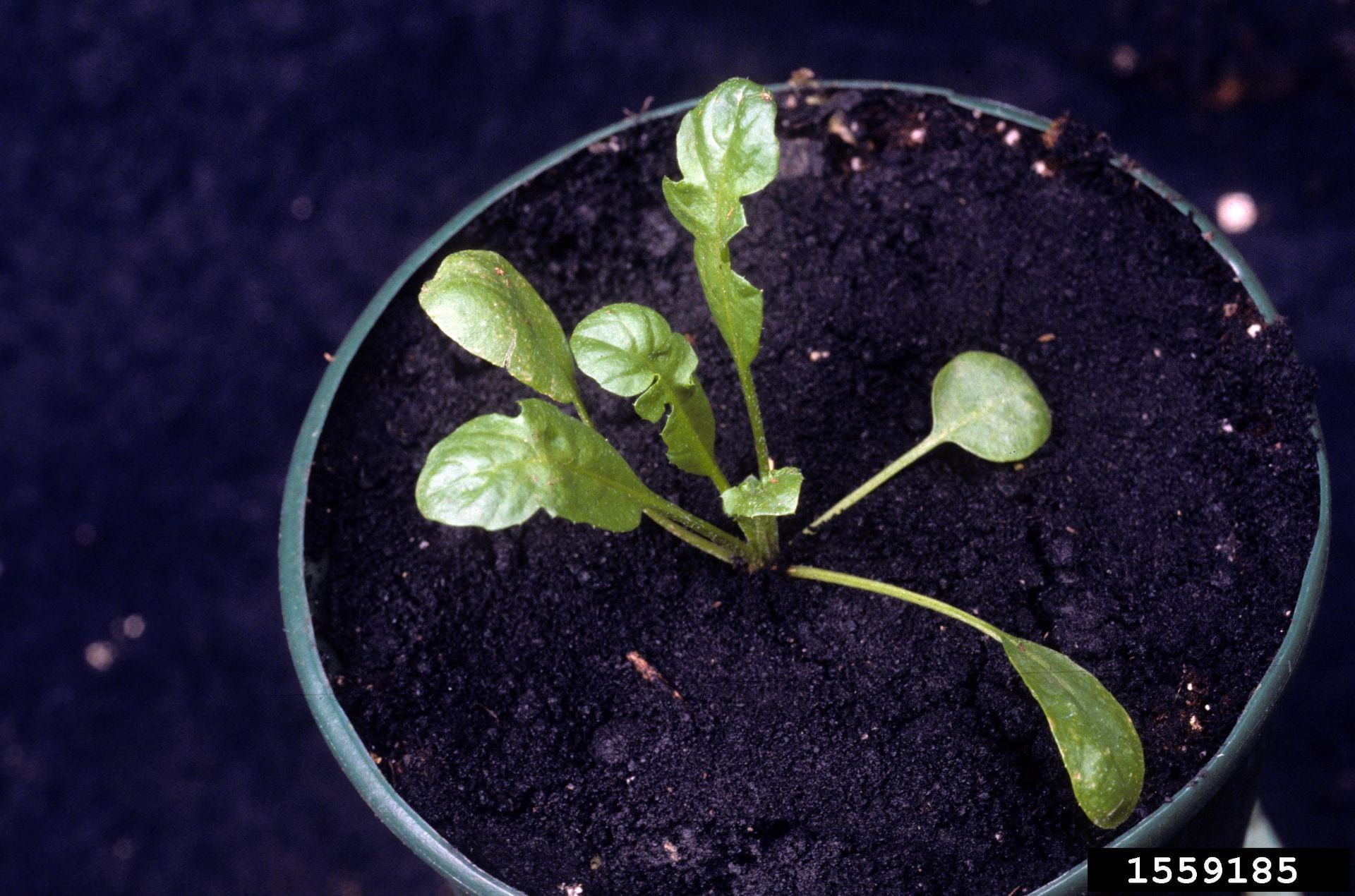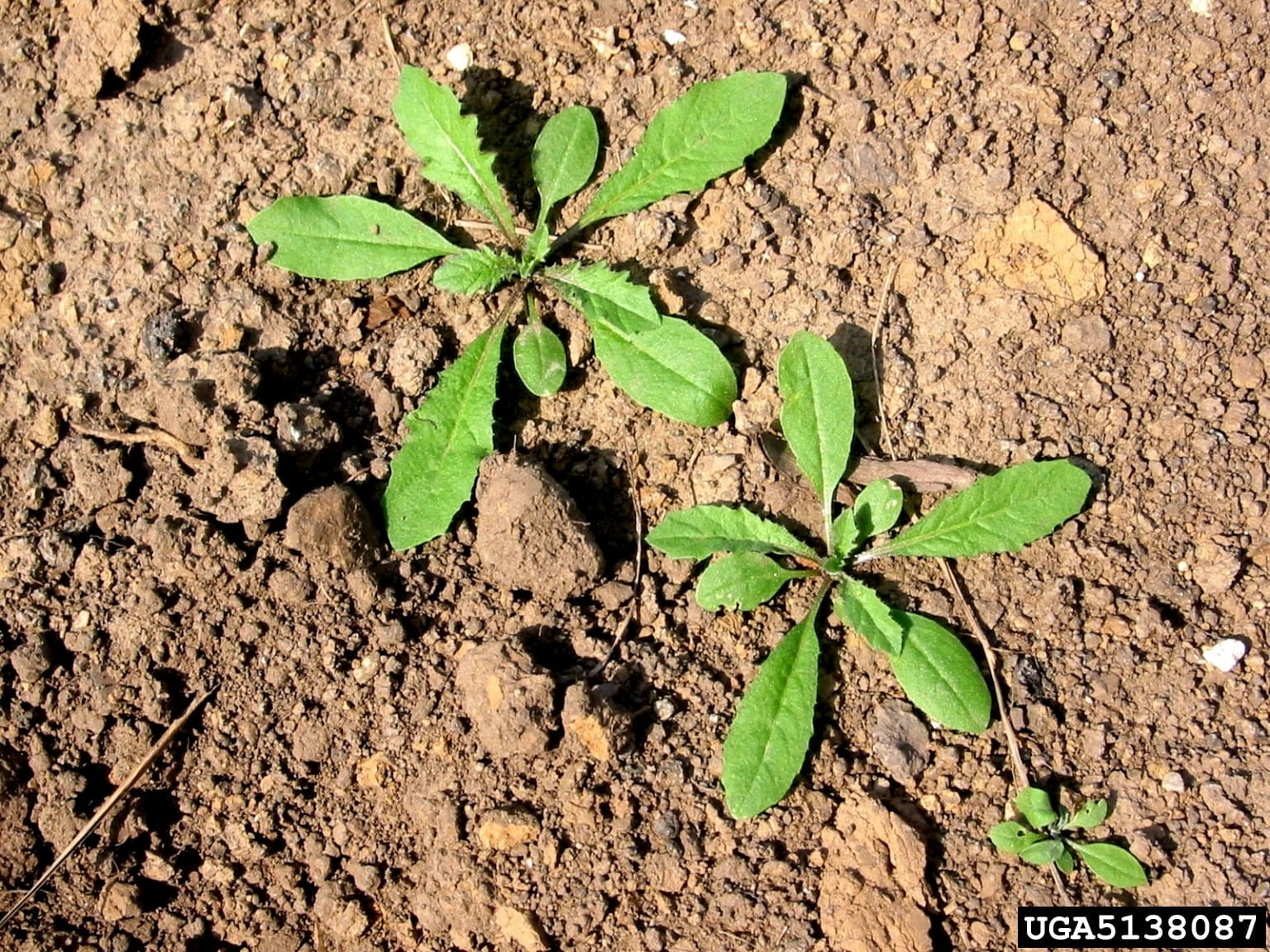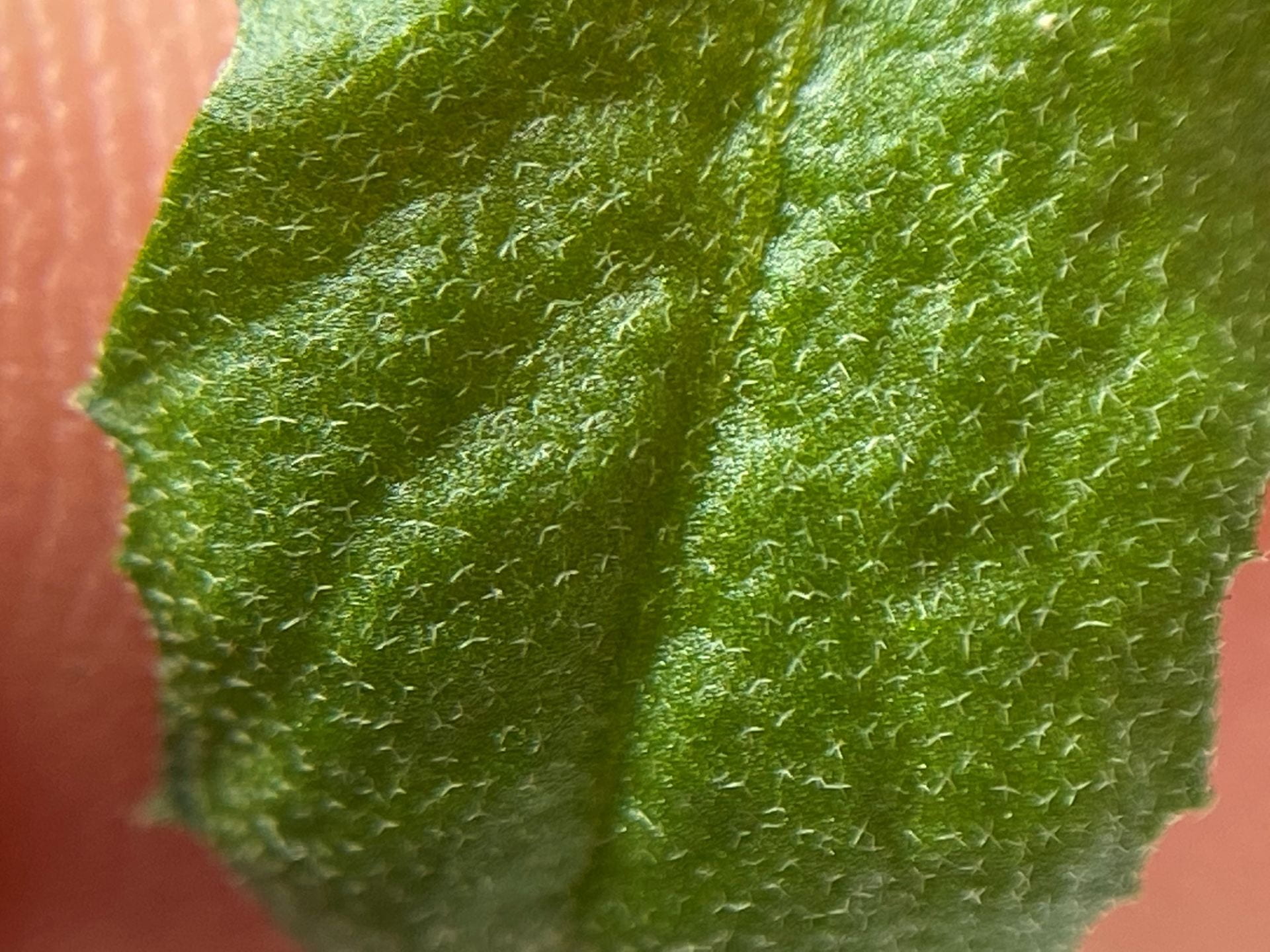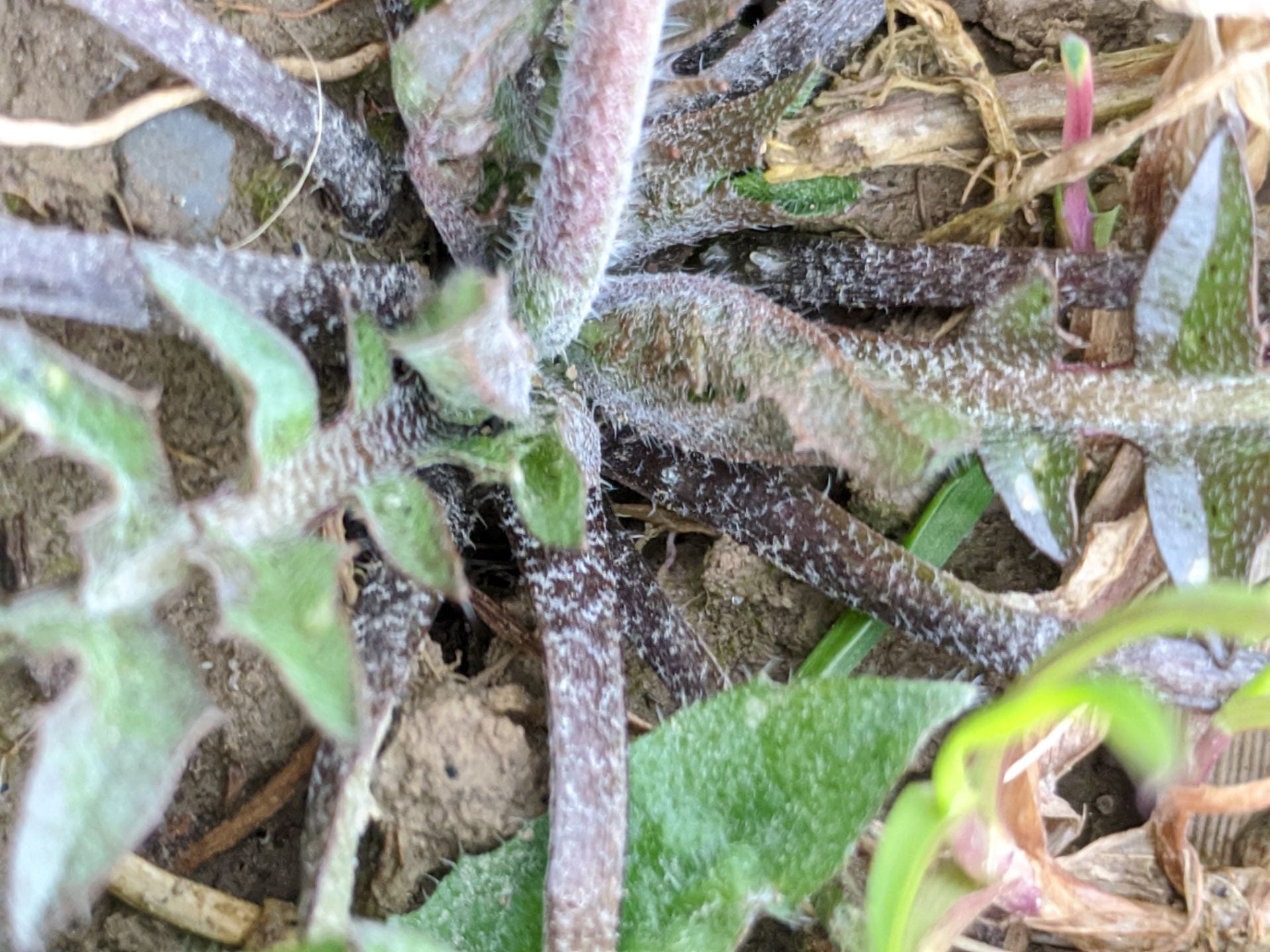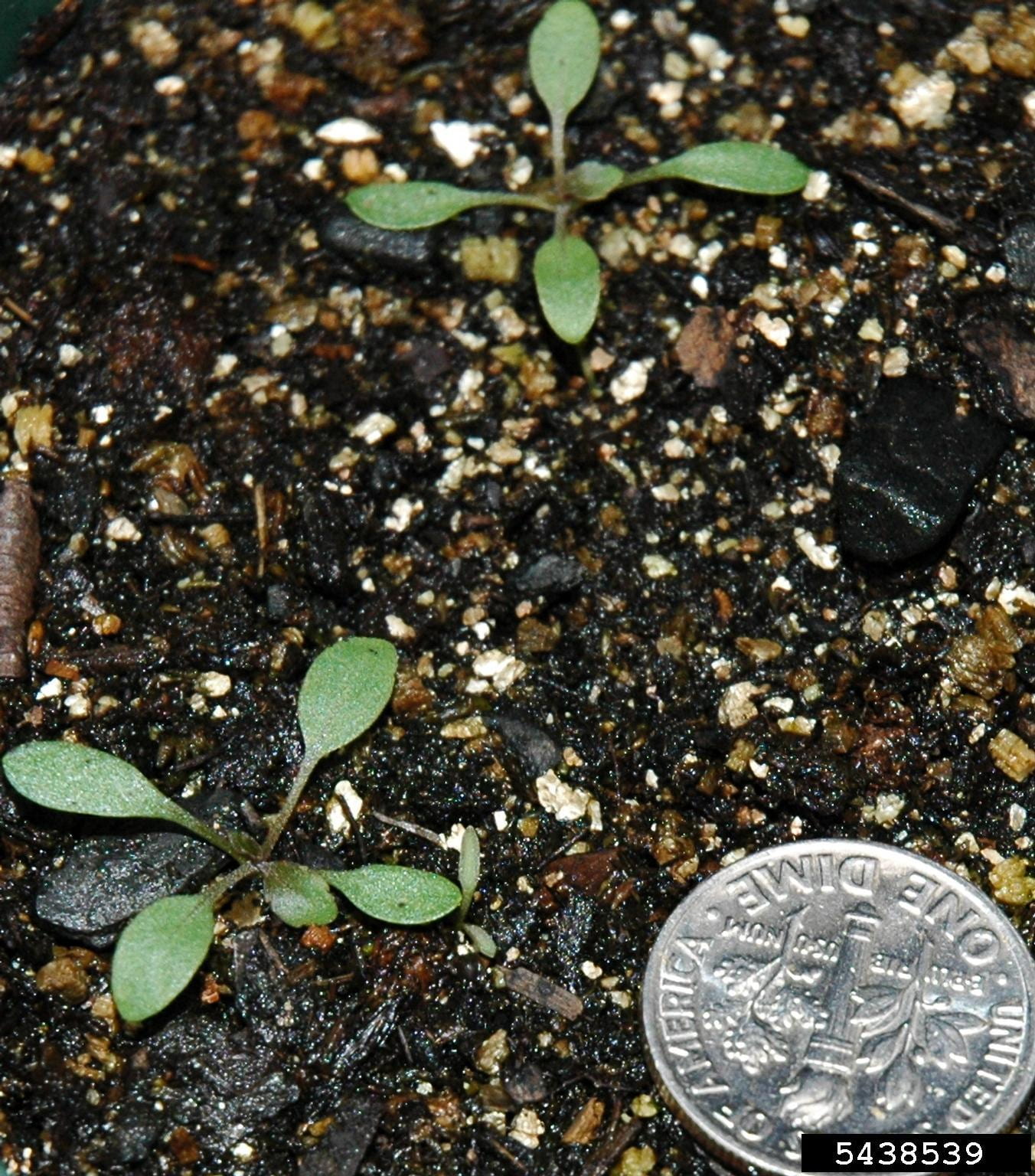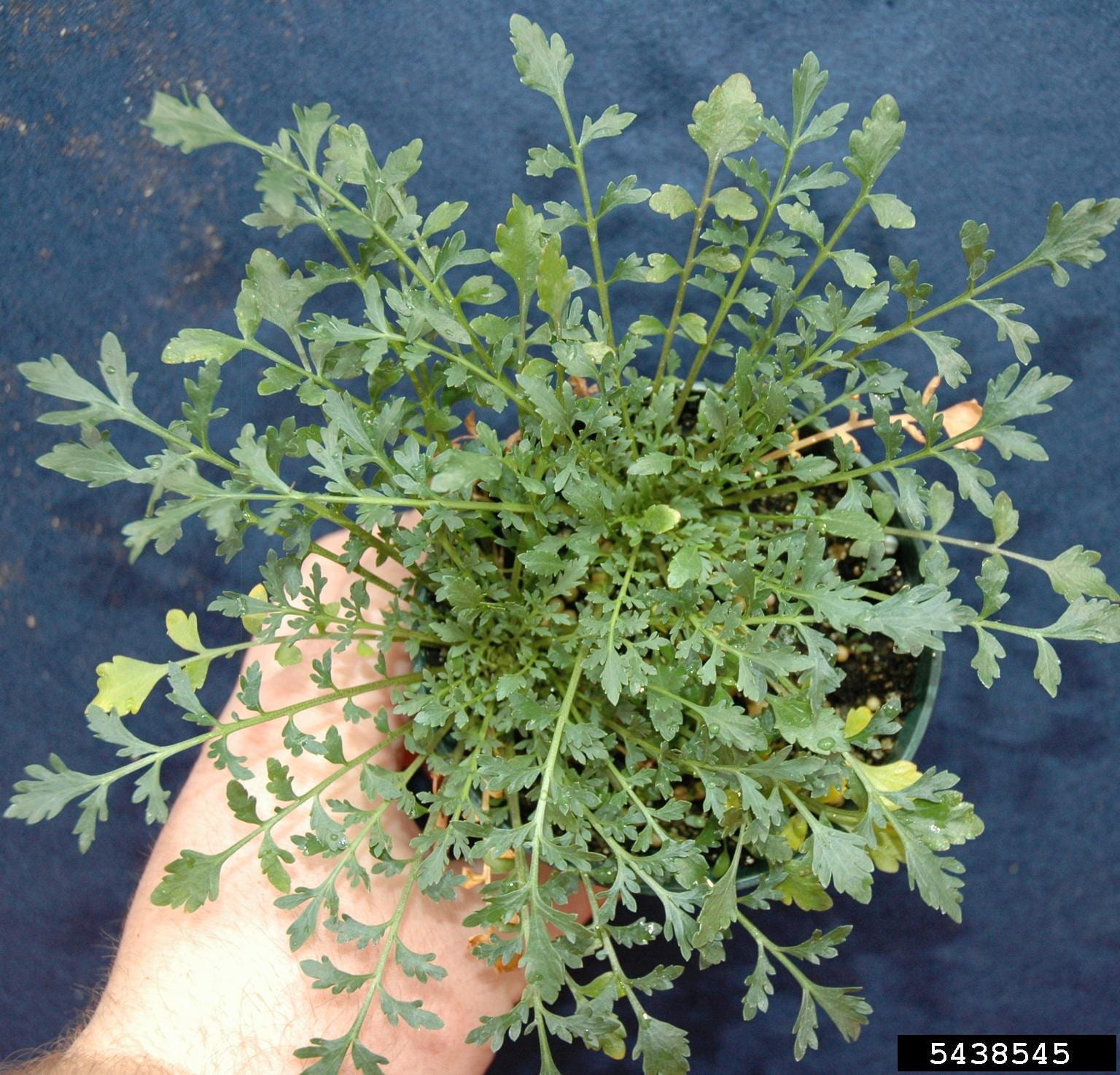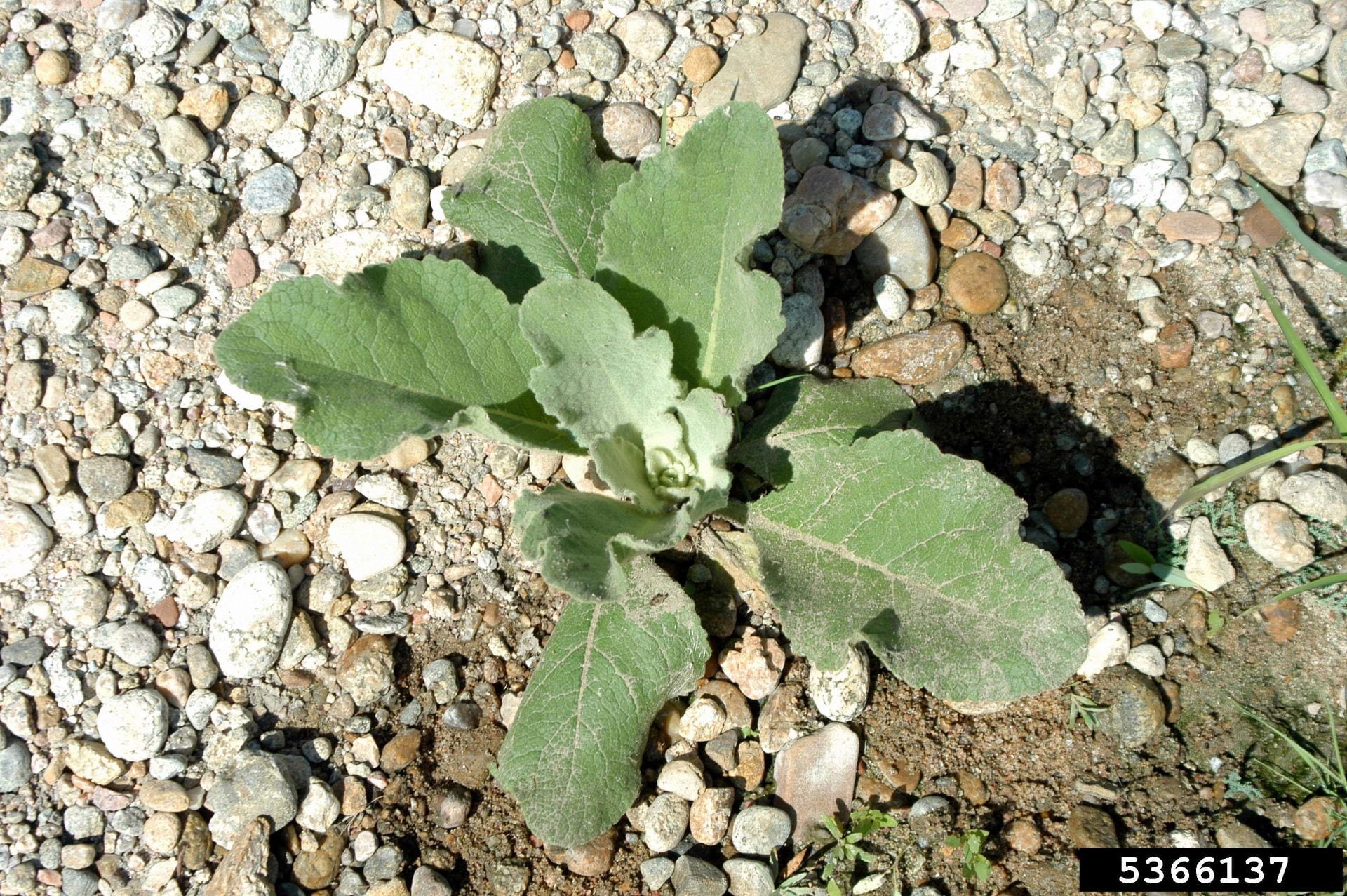In early spring there are a wide variety of weeds that have either overwintered as rosettes or are just-emerging seedlings. Some species, like horseweed, may be herbicide resistant; other species like goldenrods may be tolerant of many chemical and physical control measures. How do you tell them apart and choose the right control strategy? Careful observation can help you identify your weed in time to plan effective management this season.
There are a lot of spring rosette-forming weeds in New York, but we will focus on some of the more common and more troublesome as identified by a panel of New York agricultural extension specialists:
- Horseweed (Erigeron canadensis) and annual fleabane (Erigeron annuus)
- Canada goldenrod (Solidago canadensis)
- Common evening-primrose (Oenothera biennis)
- Shepherd’s purse (Capsella bursa-pastoris) and Virginia pepperweed (Lepidium virginicum)
- Field pennycress (Thlaspi arvense)
- Common mullein (Verbascum thapsus)
In this article we will provide identification assistance; for management guidance, please see the related pages in our website, the Cornell University crop and pest management guidelines, and other reputable sources of weed management information.
Horseweed (Erigeron canadensis, formerly Conyza canadensis)
Importance and habitat: Horseweed or marestail is a common annual weed in field crop, vegetable, berry and tree fruit operations as well as roadsides and pastures. It is one of New York’s herbicide resistant weeds; preliminary testing by Cornell and NY IPM indicate resistance to WSSA groups 2, 5, and 9 (group 2 is ALS inhibitors like Arsenal, Pursuit, Harmony; group 5 is photosystem II inhibitors like atrazine and metribuzin, group 9 is glyphosate).
Emergence timing: Usually fall in NY, but can also emerge in the spring. Overwinters as a rosette.
Cotyledon shape: oval cotyledons 2-3mm long.
First true leaves: egg-shaped with smooth edge. True leaves in images below are larger than cotyledons, with noticeable hairs on stem and leaf.
Horseweed cotyledons and first true leaves. Photo by the Ohio State Weed Laboratory of Ohio State University, via bugwood.org.
Mature Rosettes: Horseweed rosettes have very hairy leaves on prominent petioles. Later leaves are longer and narrower usually two to three times as long as they are wide, consipicuously hairy, and can be toothed along the margins. Leaves can range from very lance-shaped with minimal teething to rounded leaves with more lobing towards the tip. Plants have a taproot.
Mature horseweed rosette, showing the hairy nature of the weed and potential purple veining. Photo by Bruce Ackley of Ohio State University, via bugwood.org.
Mature horseweed rosette. Photo by the Ohio State Weed Laboratory of Ohio State University, via bugwood.org.
Similar Species: Annual fleabane (Erigeron annuus) is a largely annual plant that emerges in the spring, although it can also overwinter as a rosette. Its leaves are more egg-shaped than horseweed, more like half again as long as wide, and less hairy than horseweed. Its leaves are also more prominently toothed than horseweed, and leaf hairs are shorter and held closer to the leaf. It can be troublesome in apple orchards and potentially pastures, but has no taproot and no known resistance to herbicides. From a farm perspective, annual fleabane is not a troublesome weed, so if there is a lot of the weed in an farm field, it’s probably horseweed.
There are two other fleabanes that are fairly common in New York, daisy or prairie fleabane (E. strigosus) and Philadelphia fleabane (E. philadelphicus). Daisy fleabane is fairly similar to annual fleabane in the rosette stage, and control would be similar. Philadelphia fleabane is unlikely to be found in an agricultural setting.
Canada goldenrod is also similar, but veination in goldenrods is quite different; plese see the image of goldenrod leaf veination in the evening primrose section.
Canada Goldenrod (Solidago canadensis)
Importance/habit: New York has at least twenty-five goldenrod species, all fairly similar as seedlings and together forming a critical resource for native insects. Of these, Canada goldenrod (Solidago canadensis) is the most likely to be weedy in agricultural settings, although management will be similar for many of the various weedy goldenrods. It is a weed of perennial cropping systems, particularly in wetter soils.
Emergence timing: Goldenrods are perennial, with reproduction both by seed and creeping rhizomes. They do form rosettes before producing the characteristic tall single stalks that are seen in the summer and fall.
Cotyledons: rarely seen
First true leaves: The first leaves to emerge are lightly indented to toothed, with short petioles and toothed margins. First leaves may have a few hairs on the top; mature leaves have hairs on the underside along the midvein, and sometimes along the leaf edge.
Mature rosette: Long, narrow, pointed leaves that taper at the base and tip, with white hairs on the underside of the leaf, especially along the midvein, and sometimes on the leaf edge, but not on the top. No petiole; thin leaf extends all the way down to the plant stalk rather than having a defined stem.
Identifying traits: Three main veins, the midrib vein and one on either side, starting at the midrib midway between the midrib and the leaf edge. Hairs on the underside of the midrib and sometimes the leaf edge, but not on the upper surface. Older leaves lack a petiole (leaf stem).
Similar species: Fairly similar to the other unlobed rosette-forming species, especially common evening-primrose. Evening-primrose has a different veination pattern, described in the evening-primrose section. Horseweed is hairy overall, while full-size goldenrod leaves are only hairy underneath; goldenrod has a more parallel veination pattern versus the branching pattern of horseweed (above).
Canada goldenrod seedling. Lightly toothed leaves, three-veined structure not yet emerged. Photo by Bruce Ackley of Ohio State University, from bugwood.org.
Canada goldenrod rosette. Observe the three veins, whitish midvein, and shape similar to horseweed. Photo from the Michigan State University website for goldenrod: https://www.canr.msu.edu/resources/canada-goldenrod-solidago-canadensis.
Common evening-primrose (Oenothera biennis)
Importance/habit: Common evening-primrose is a weed of field crops, vegetables, and berries in New York. There are several evening-primroses in our region, but this is the most common weedy species for New York.
Emergence timing: Winter annual or biannual that overwinters as a rosette.
Mature rosette: Entire, unlobed to wavy-edged leaves that are wider towards the tip than the base; white midvein, which can be purple-tinged in the rosette, short hairs on the top of the leaf but no hairs on the bottom of the leaf.
Identifying traits: The most distinctive traits of the evening-primroses are their white midvein, which can be purple-tinged in the rosette, and the short hairs on the top of the leaf but lack of hairs on the bottom of the leaf.
Common evening-primrose rosette. Note the very white midrib and strong alternate veining. Photo by John Cardina of Ohio State University, via bugwood.org.
Similar species: Canada goldenrod midveins can also appear lighter than the leaf color, but the pattern of veins is very different: Common evening-primrose, below left, has a central midrib with veins branching out all the way up the leaf, like the supports of a cathedral ceiling (but not all the way to the edge of the leaf like an elm would – instead, they curve towards the leaf tip); Canada Goldenrod, the leaf on the right, has more parallel veination.
Evening-primrose leaves showing a clear pinnate veination, with opposite veins sprouting off the prominent midvein.
Photo by John Cardina of Ohio State University, via bugwood.org.
Importance and Habitat: Shepherd’s purse is another overwintering annual, which is more of a problem in vegetable cropping systems than field crops.
Emergence timing: This species can emerge in late summer, fall, or occasionally spring; normally it overwinters as a rosette.
Cotyledon: Oblong with rounded tip and narrowed base, 3-6mm long.
First true leaves: First leaves are rounded, and overall leaf shape is variable from smooth edges to deep dissections.
Shepherds Purse early seedling. Photo by the Ohio State Weed Lab of Ohio State University, via bugwood.org.
Mature rosette: Deeply dissected leaves with larger segments at the leaf tips. Leaves have noticeable petioles and the whole leaf is covered in star-shaped hairs.
Identifying traits: Shepherd’s purse flowers early (observed in late April 2020), which helps with diagnosis as their seed capsules are a distinctive triangular shape that differentiates it from other small mustards like hairy bittercress and Virginia pepperweed. Without flowers and seeds, the clearest trait for positive ID of shepherd’s purse is that the hairs on its leaves are star-shaped. This is easy to see with a microscope: but you can pick it out by using a smartphone camera and zooming all the way in as seen below.
Similar species: Virginia pepperweed has oval seed capsules instead of triangular ones, and any hairs are individual rather than star-shaped. If your rosette has no seedheads and you can’t quite see the hairs, pepperweed leaves have a peppery taste, and while first leaves of pepperweed are hairy, the mature rosette leaves have no hairs.
Virginia pepperweed cotyledons and first leaves. Photo by OSU Weed Lab of Ohio State University, via Bugwood.org
Virginia pepperweed mature rosette. Photo by Bruce Ackley of Ohio State University, via Bugwood.org.
Mature Virginia pepperweed plant. Photo by the Ohio State Weed Lab of Ohio State University, via Bugwood.org.
Common Mullein (Verbascum thapsus)
Importance/habit: Common mullein is a biannual, forming a rosette in the first year and an impressively tall flowering stalk in the second. It is more of a landscape and perennial crop weed, although it does occur in annual crops.
Emergence timing: Emerges from late summer through early fall as well as in the spring.
Cotyledon: spatula shaped.
Mature rosette: Large, teardrop-shaped, densely hairy leaves alternately arranged, with wavy margins and flattened petioles. These form a rosette that can be 2’ or more across. The plant looks greyish and feels fuzzy.
Identifying traits: Densely hairy, greyish appearance, fuzzy feel, large size, taprooted.
Similar species: The intense hairiness of the plant should clearly separate it from the other spring rosettes in our area.
An additional resource is Missouri University’s Common Mullein page: https://weedid.missouri.edu/weedinfo.cfm?weed_id=305.
References
References:
Weeds of the Northeast, by Richard H. Uva, Joseph C. Neal, and Joseph M. DiTomaso. Published in 1997 by Cornell University.
Identification Guide to Weeds of Quebec, by Claude J. Bouchard and Romain Neron. Published in 2003 by CPVQ inc.
University of Illinois’ IPM program has a good rundown of common spring weeds: http://bulletin.ipm.illinois.edu/pastpest/articles/200305e.html.
I Will Take Action herbicide classification chart: https://iwilltakeaction.com/uploads/files/2020-take-action-herbicide-classification-chart.pdf
Pennsylvania State University Extension’s information page on shepherd’s purse: https://extension.psu.edu/shepherds-purse
University of Missouri IPM’s Weed of the Month devoted to field pennycress: https://ipm.missouri.edu/IPCM/2016/4/Weed_of_the_Month-Field_Pennycress/
Venkatesh S, Harrison K, and Riedel RM. 2000. Weed hosts of soybean cyst nematode (Heterodera glycines) in Ohio. Weed Technology 14:156-160.
Virginia Tech’s weed identification page for Oenothera biennis: https://weedid.cals.vt.edu/weedimg/101 .
Canada goldenrod rosette photo from the Michigan State University website for goldenrod: https://www.canr.msu.edu/resources/canada-goldenrod-solidago-canadensis.
NYS Parks Cool Science, Flora & Fauna, Stewardhsip blog post: The Glory of Goldenrod, by Julie Lundgren of NYS Natural Heritage Program: https://nystateparks.blog/2019/09/17/the-glory-of-goldenrod/.
Bugwood.org information page on goldenrod species: https://wiki.bugwood.org/HPIPM:Goldenrod.
Missouri University’s Common Mullein page: https://weedid.missouri.edu/weedinfo.cfm?weed_id=305.
University of Dijon annual fleabane page: https://www2.dijon.inrae.fr/hyppa/hyppa-a/erian_ah.htm#Seedling
Ohio State University perennial and biannual weed guide: https://www.oardc.ohio-state.edu/weedguide/single_weed.php?id=42.

